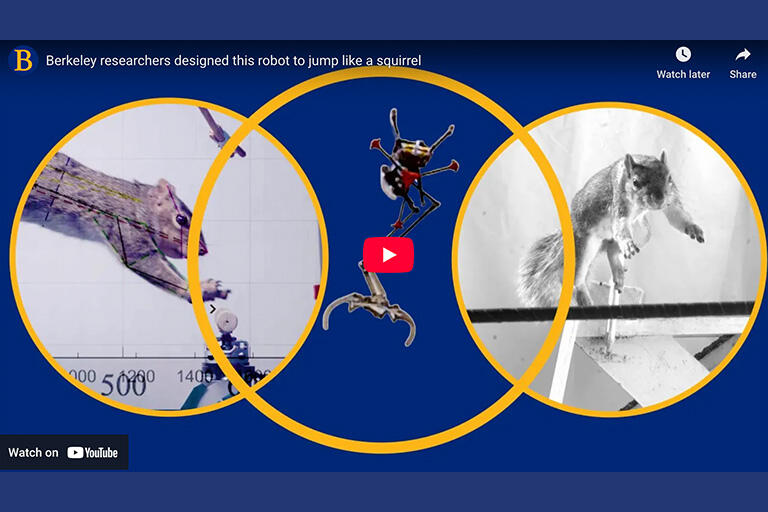Engineers have designed robots that crawl, swim, fly and even slither like a snake, but no robot can hold a candle to a squirrel, which can parkour through a thicket of branches, leap across perilous gaps and execute pinpoint landings on the flimsiest of branches.
University of California, Berkeley, biologists and engineers are trying to remedy that situation. Based on studies of the biomechanics of squirrel leaps and landings, they have designed a hopping robot that can stick a landing on a narrow perch.
The feat, reported March 19 in the journal Science Robotics, is a big step in the design of more agile robots, ones that can leap among the trusses and girders of buildings under construction or robots that can monitor the environment in tangled forests or tree canopies.
“The robots we have now are OK, but how do you take it to the next level? How do you get robots to navigate a challenging environment in a disaster where you have pipes and beams and wires? Squirrels could do that, no problem. Robots can’t do that,” said Robert Full, one of paper’s senior authors and a professor of integrative biology at UC Berkeley.
A free-ranging squirrel leaping from a perch to a branch instrumented to measure force (top), part of a UC Berkeley experiment to understand how the animal lands without over- or undershooting. The group’s findings helped UC Berkeley engineers modify a one-legged robot, called Salto, to jump from one branch-like perch to another — a first for any robot.
“Squirrels are nature’s best athletes,” Full added. “The way that they can maneuver and escape is unbelievable. The idea is to try to define the control strategies that give the animals a wide range of behavioral options to perform extraordinary feats and use that information to build more agile robots.”

